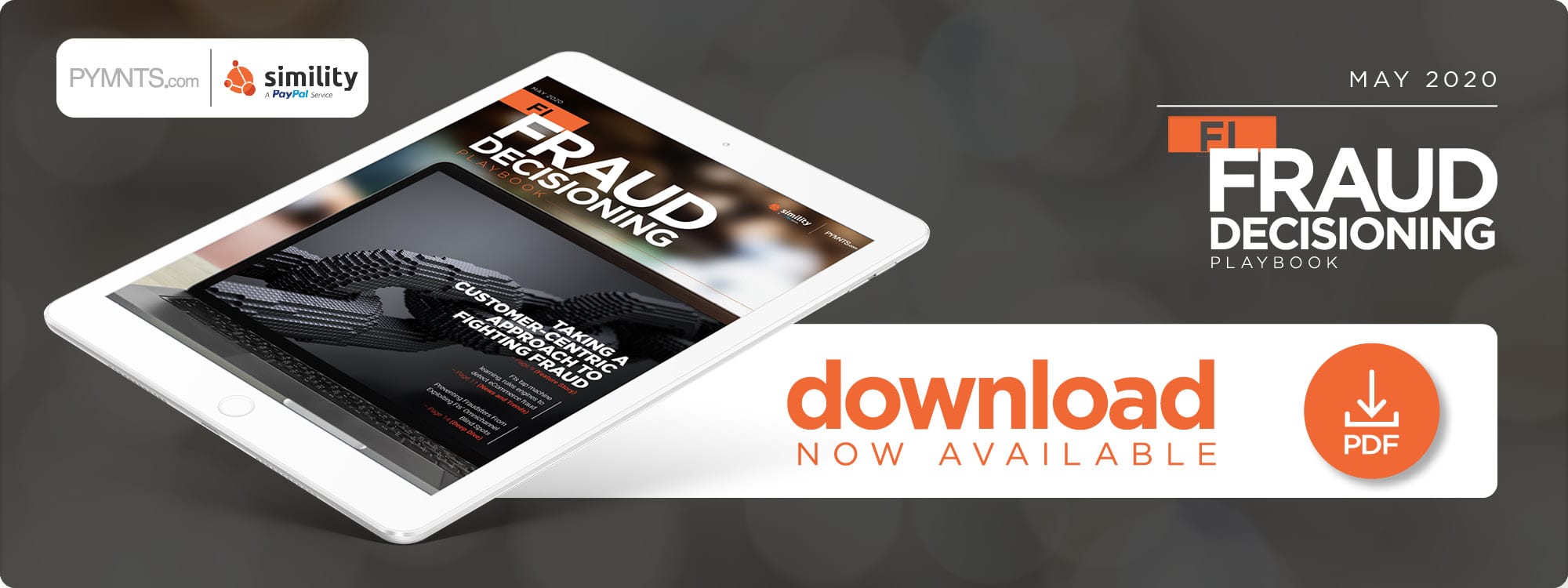Taking A Customer-Centric Approach To Fighting Fraud

Social distancing mandates are pushing consumers to embrace digital-first banking services, creating opportunity for fraudsters to bury their scams across multiple channels. In this month’s FI Fraud Decisioning Playbook, Uma Wilson, executive vice president and director of treasury management at UMB Bank, discusses how behavioral analysis and real-time mobile alerts can help FIs build more comprehensive customer profiles to catch and prevent fraudulent activity.
Social distancing mandates during the COVID-19 pandemic have advanced banking’s trend toward omnichannel operations. Consumers want to access their financial institutions through the most convenient channels for any given situation, but the protocols in place to stop the virus’s spread have meant that banks that do not provide digital access may struggle.
Each channel and payment method FIs enable gives consumers more options but also offers fraudsters potential ways to access their funds. The bank robbers who decades ago would have pulled off in-person heists have in many cases instead become cybercriminals who hack into mobile accounts, purchase stolen credit card information on the dark web and impersonate customers online or over the phone. This means FIs must be able to ferret out and defend against an ever-more complex array of attacks, and they deploy advanced fraud detection strategies and designate additional resources to keep themselves and their customers safe.
Financial institutions must implement robust anti-fraud tools if they want to continue offering multichannel conveniences, and collaboration between banks and their customers is at the heart of any good defense strategy, Uma Wilson, executive vice president and director of treasury management, card and bank product at Missouri-based UMB Bank, noted in a recent interview with PYMNTS. This means FIs and account holders must communicate effectively regarding potential fraud and work together to thwart it.
“UMB focuses on monitoring customers’ patterns, and we encourage customers to sign up for alerts so that we can work together to quickly react to potential fraud,” Wilson said. “By having the bank and the customer work together to mitigate fraud, rather than working separately in silos, we’re collectively better able to respond to fraudulent activity.”
Staying ahead of fraud requires constant innovation. Attackers are always developing new ways to take advantage of customers and banking channels, but FIs can use such channels to closely communicate and engage with account holders as fraud-fighting partners.
Red Flag Behaviors
FIs need to reach out to customers when they suspect illicit activity, Wilson explained, and detecting potential crimes first requires clear understandings of legitimate customer behavior. Banks that know their customers’ normal transaction activities will be better able to recognize when actions indicate ATOs, card thefts or other crimes. They therefore must understand consumers’ individual habits, which could mean knowing that a certain consumer typically purchases groceries at a local store on Saturday mornings or that a business client always transacts domestically.
Behaviors that match these patterns indicate low fraud risks, and FIs can let those transactions clear. Activities that deviate from these norms — such as a domestic-focused business suddenly sending a dozen international wire transfers — would be cause for further investigation.
“If a business sends transactional files that typically do not include any transactions going overseas, but today the FI received 10 transactions going overseas, then let’s pause right here and evaluate further, and let’s do a quick reach out to our customer to validate certain things,” Wilson said. “Behavior is extremely important when you’re trying to fight fraud.”
Fraud-fighting solutions that monitor individual channels can catch fraudsters at work, but analyzing behavior across channels can create even more comprehensive understandings of normal client behavior. FIs that can determine when customers’ activities are atypical can confirm whether unusual transactions were indeed made by them — and thus should be allowed to proceed — or whether they were initiated by fraudsters and should be blocked.
Mobile Collaboration
Not all customer communication methods are equally effective, however, and FIs must choose their approaches wisely. They often wish to send customers alerts about potential fraud, but inadequate messaging methods could result in customers not seeing the notifications until the next day or even later.
Banks that send postal mail cannot expect speedy replies, for example, and consumers who use desktop computers to check their email cannot receive alerts while away from their computers.
Modern technologies have removed many of these communication hurdles, however. Consumers’ and business executives’ progressively omnichannel lives are assets in this regard because FIs witnessing potential misbehavior can use digital channels to quickly and unobtrusively reach out to customers.
“We have some fraud tools and fraud monitoring we do, and if some behavior a customer is doing does not meet a certain risk score threshold, we may send a text to the individual cardholder where they can validate if in fact, yes, they did that transaction,” Wilson said.
Smartphones have become integral to most consumers’ lives, which means FIs can seamlessly contact them via text, app alert or other preferred method, she added. Customers’ quick responses to such messages and participation in FIs’ fraud-fighting efforts can go a long way toward safeguarding their finances. Using easy-to-access, ubiquitous communication tools like mobile solutions is thus important for banks because it allows them to seamlessly involve customers in security efforts. The more conveniently and smoothly consumers can be engaged to help keep themselves safe, the more likely they are to want to participate in such activities.
“These days, we all have a mobile device we all carry,” Wilson noted. “Banks need to be part of customers’ day-to-day lives. Right now, if I as a consumer swipe my debit card, I instantly get a notification — a text message or email, whatever option the end user has selected — so if I get a text now saying, ‘Thanks for swiping your card for $50 at a store,’ if I didn’t make that transaction and can quickly react to that and call my bank or stop my card using my mobile app … that’s going to help me prevent myself from more exposure to fraud.”
Banking is rapidly becoming more omnichannel, and FIs need to be sure they can safeguard customers across all the products through which they access their financial services. Tailored fraud detection tools can monitor specific channels as banks expand services into additional platforms, but strong customer communication will remain core to effective cross-channel anti-fraud strategies.

